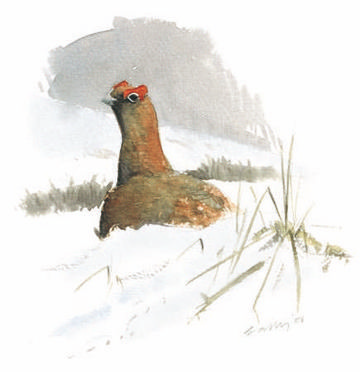
Red Grouse © Ray Scally
The winter distribution map is very similar to that for the breeding season, as would be expected, for this is a very sedentary species, and 80-90% of grouse die within about a mile of their natal site. Red Grouse is the only species that inhabits these moorlands throughout the year, staying put even in the bleakest and most exposed situations. During very hard weather, with deep lying snow, some Red Grouse may travel quite long distances – even onto farmland – to find food; but such conditions are exceptional in the Cheshire hills.
Although their population has probably reduced considerably, the distribution of Red Grouse in Cheshire is much the same as a century ago. Coward and Oldham (1910) wrote that ‘thousands of acres on the hills are devoted to the preservation of the Red Grouse and on many of the moors large bags are obtained’, although most of their comments apply to the Longdendale part of what was then Cheshire. Bell (1962) found nothing to say except that it was ‘common’ in the heather-clad hills, the rest of his account being of ancient records of odd birds elsewhere in the county.
Although the season extends until 10 December, most estates finish shooting much earlier as male Red Grouse try to establish territories in the autumn. They hold domain over an area from 1 to 10 ha of prime habitat, and successful birds survive the winter far better than those in the roaming flocks. A good territory contains a variety of well-managed heather, young plants providing better food, and older heather offering better cover. Most mortality is of non-territorial birds in the poorer habitats. They are short-lived birds: nearly two-thirds die in their first year, irrespective of shooting, which takes the harvestable surplus which would die anyway. Those that are not shot experience reduced competition and thus better survival rates.
During the long winter nights Red Grouse normally roost in packs on the ground, identifiable by the collection of their droppings. They sometimes venture forth to feed on bright moonlit nights.
Sponsored by Richard May

